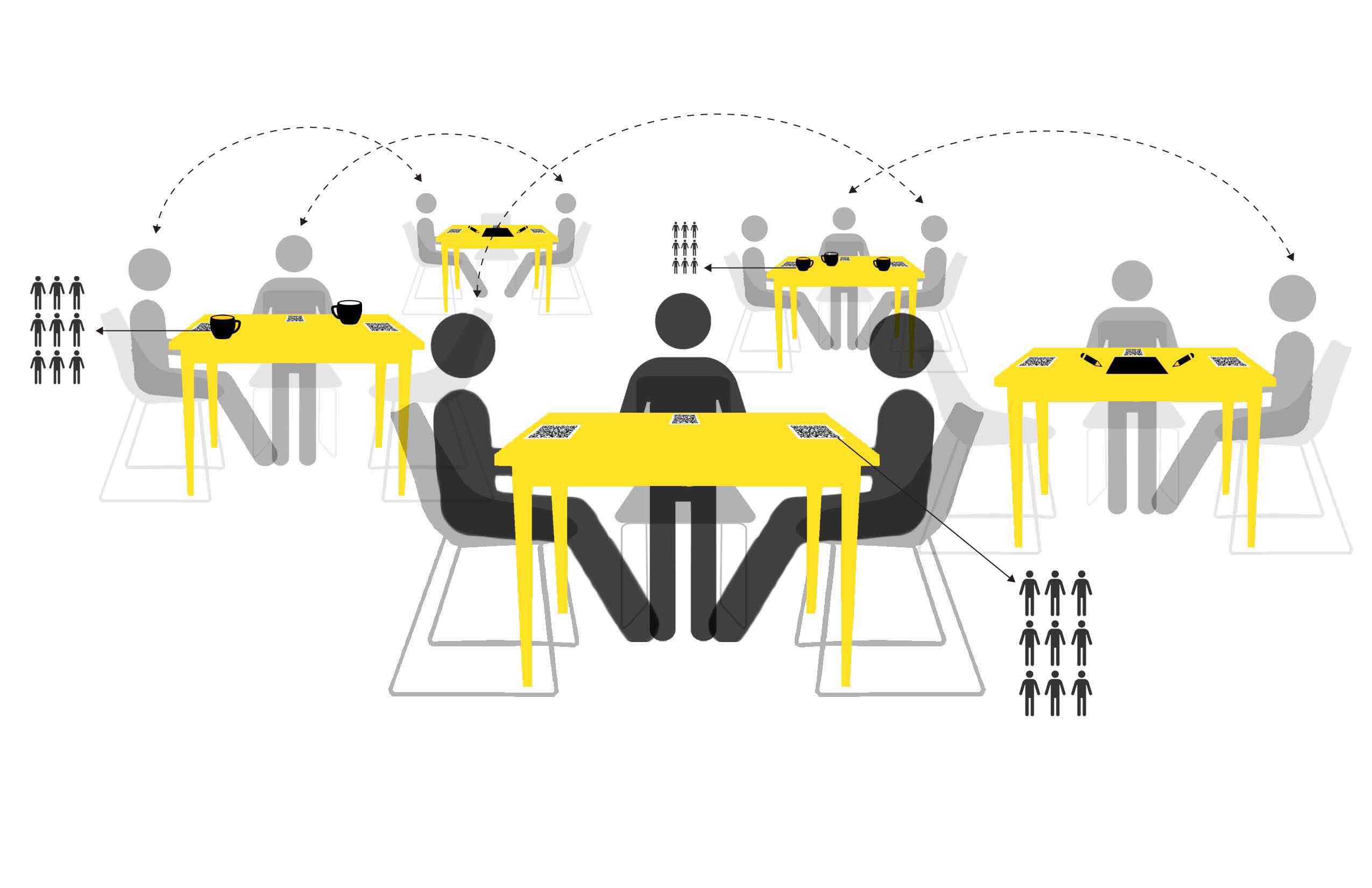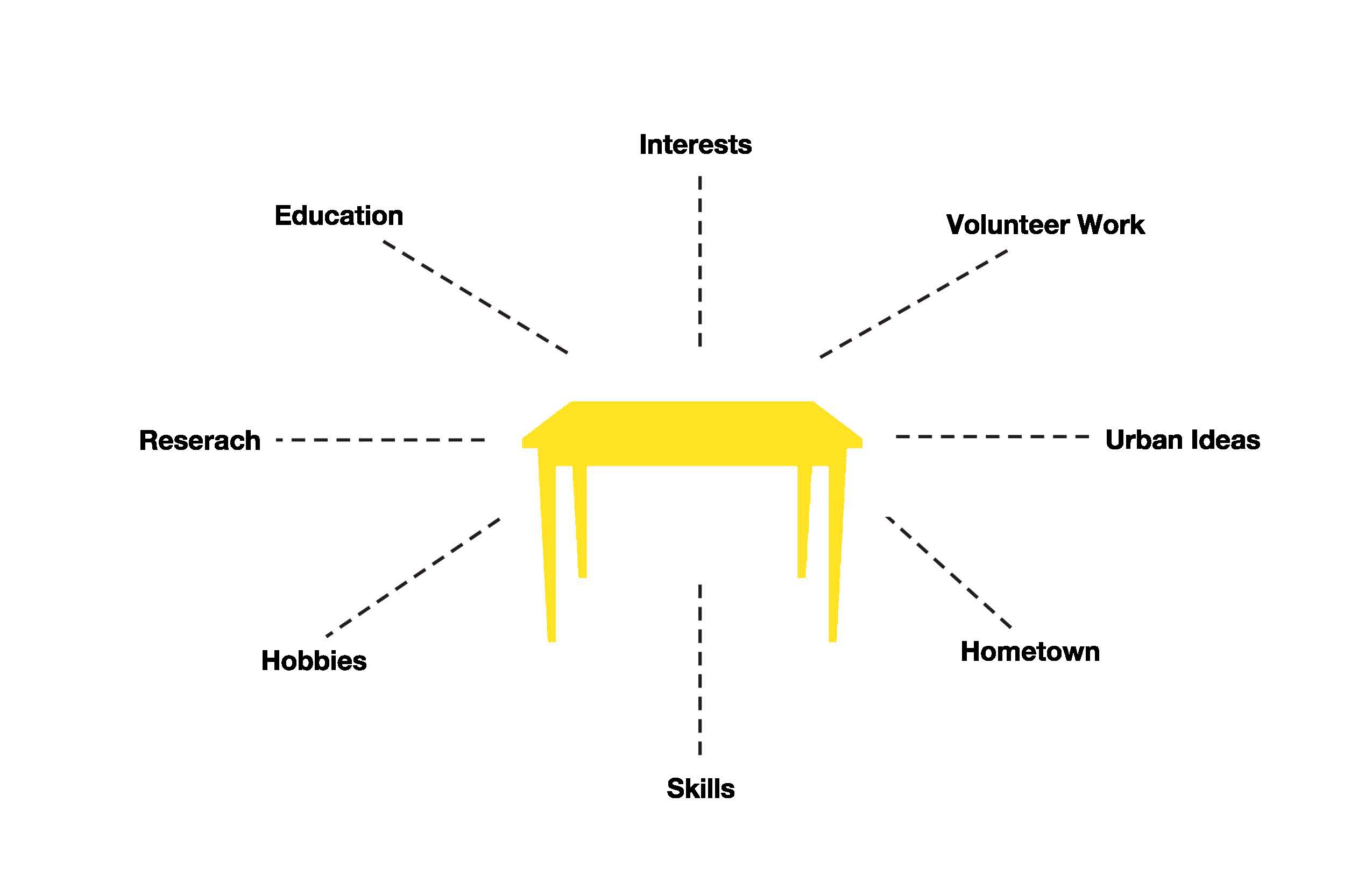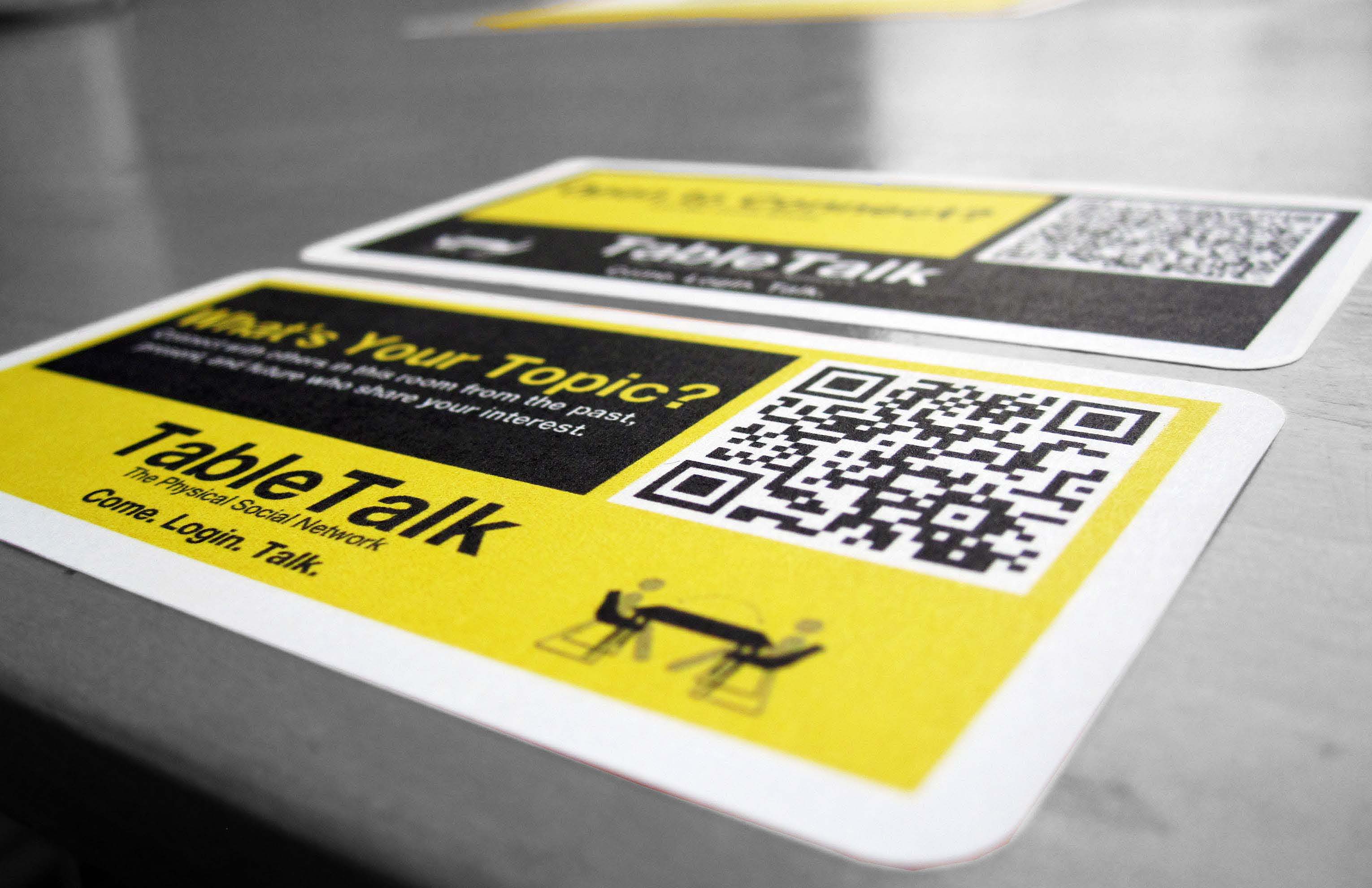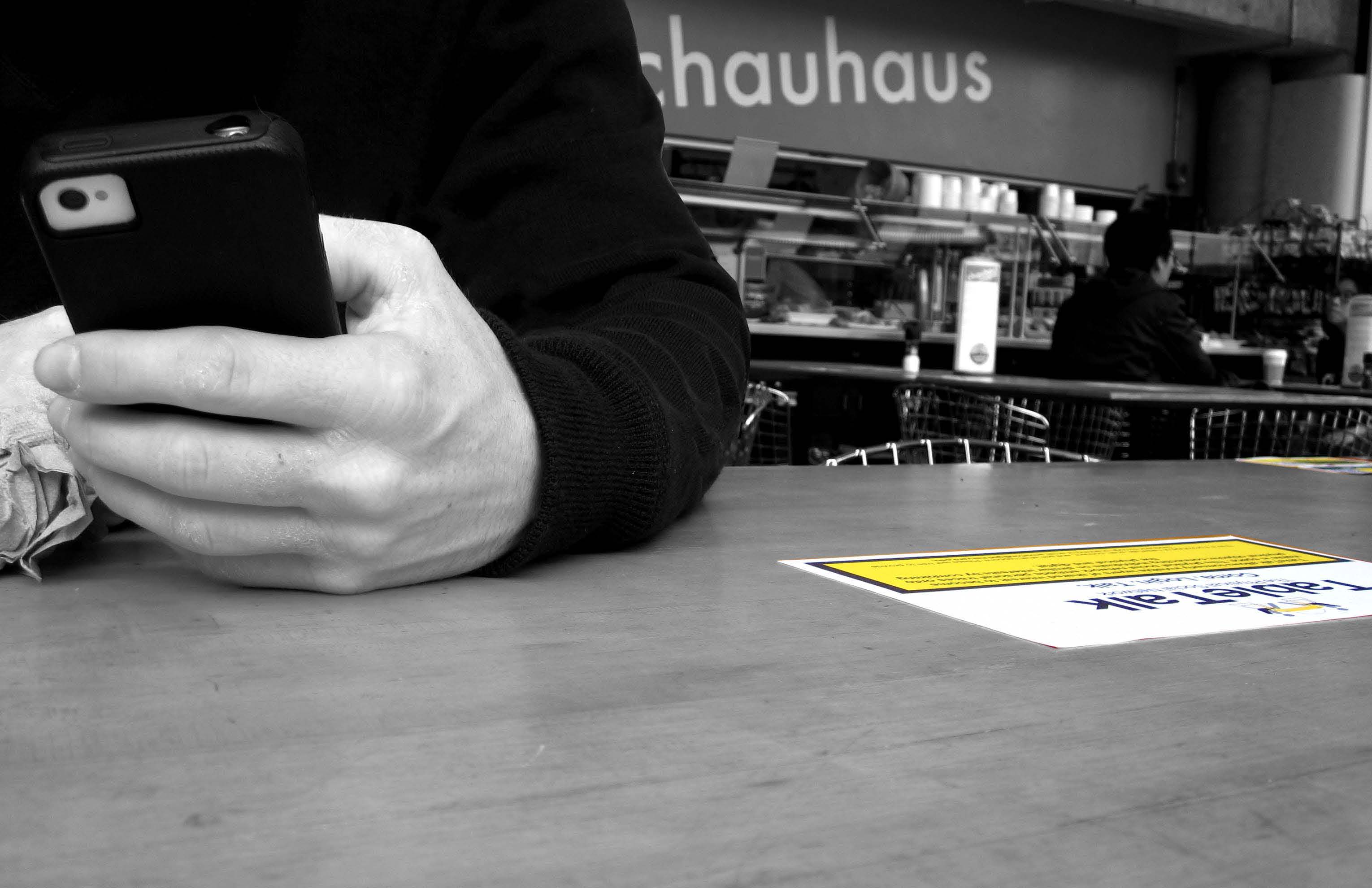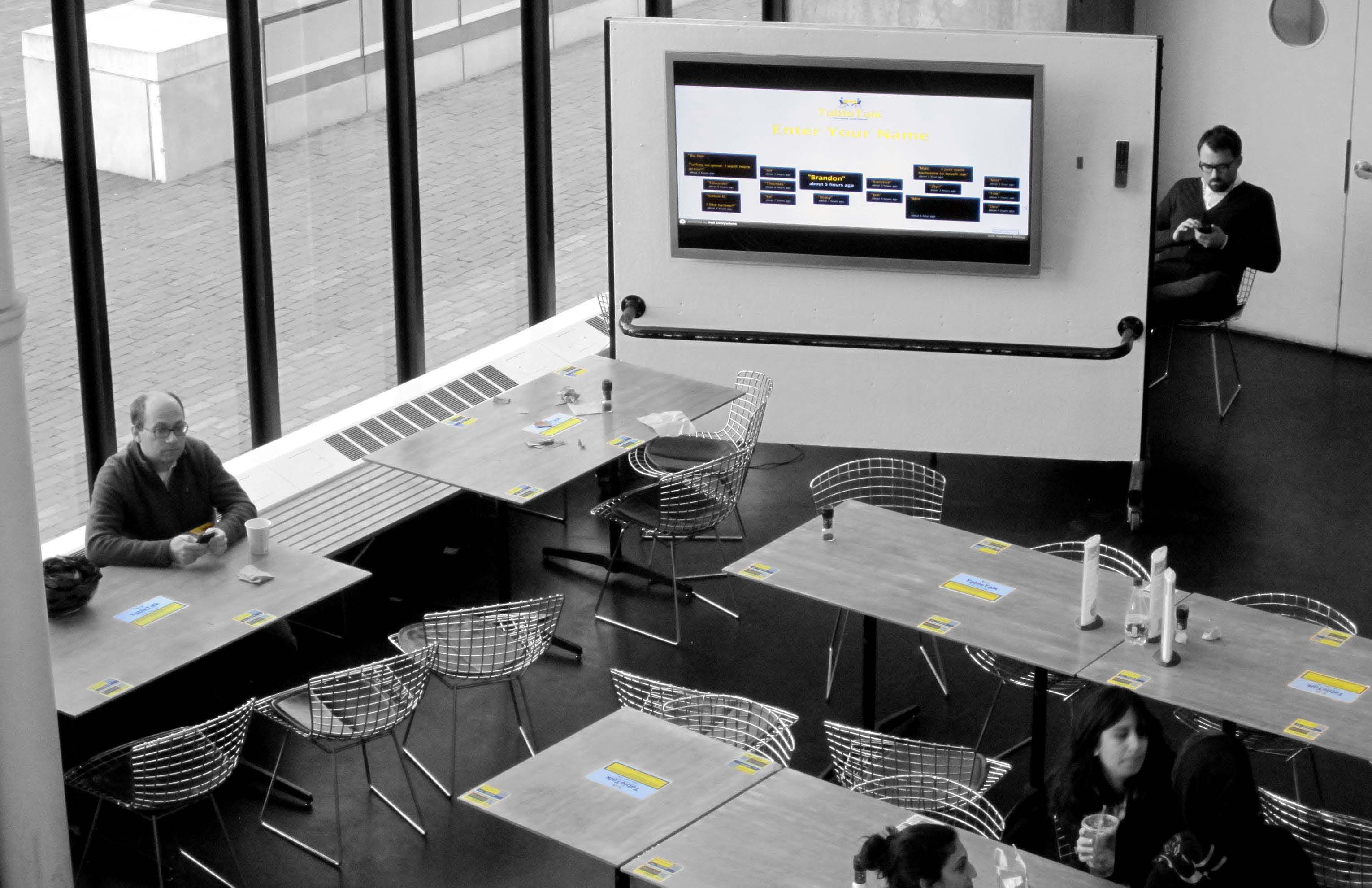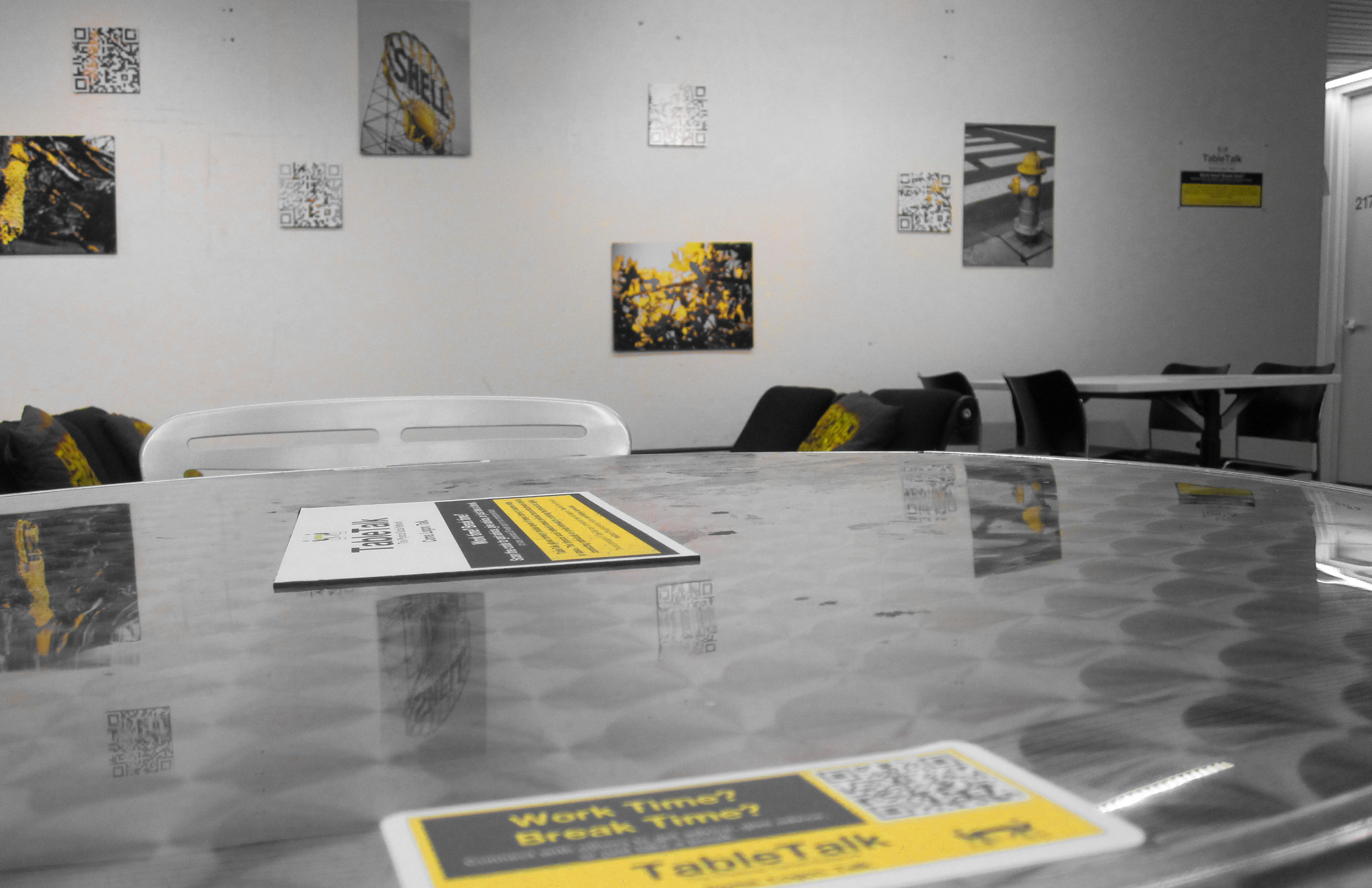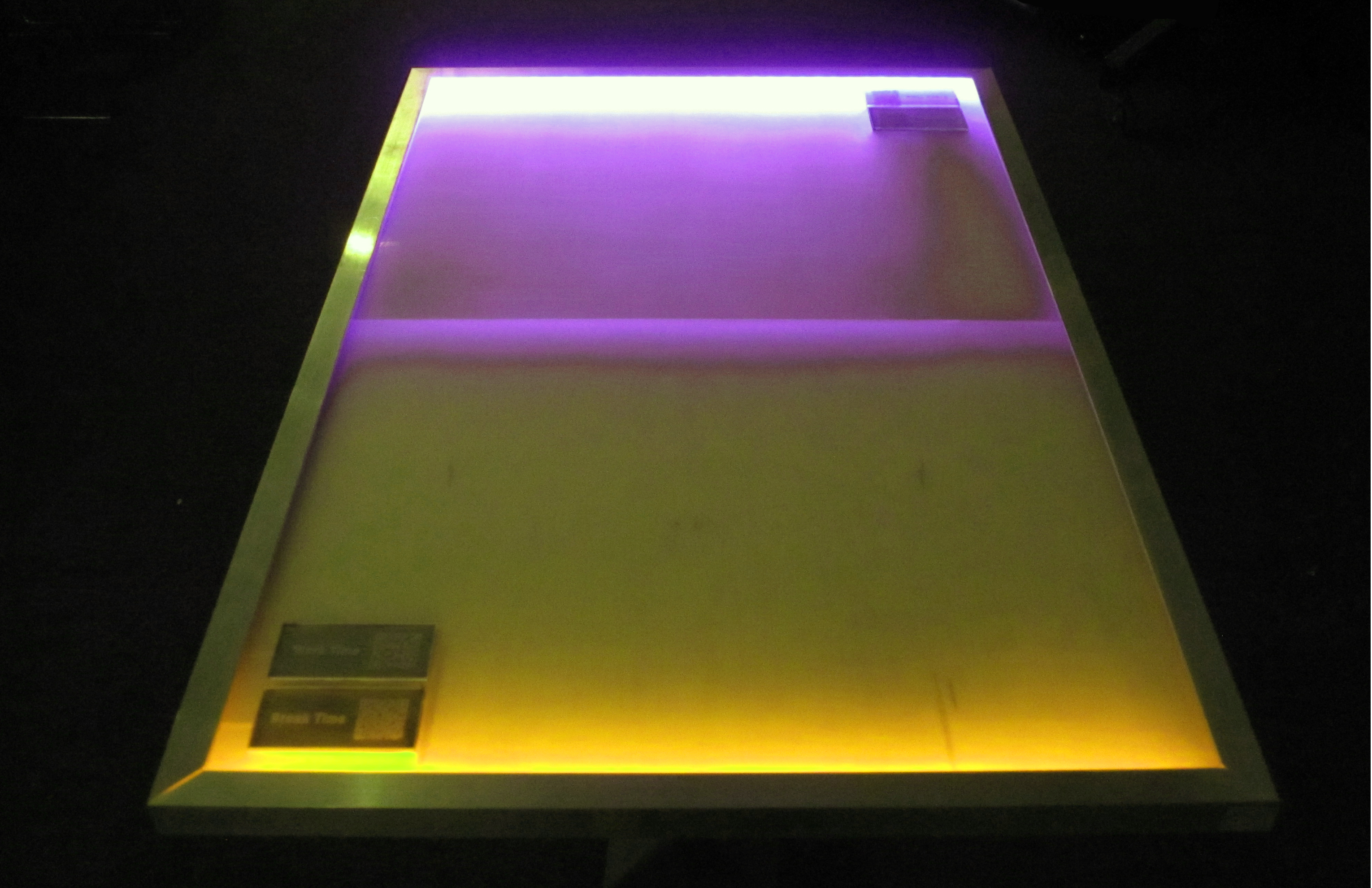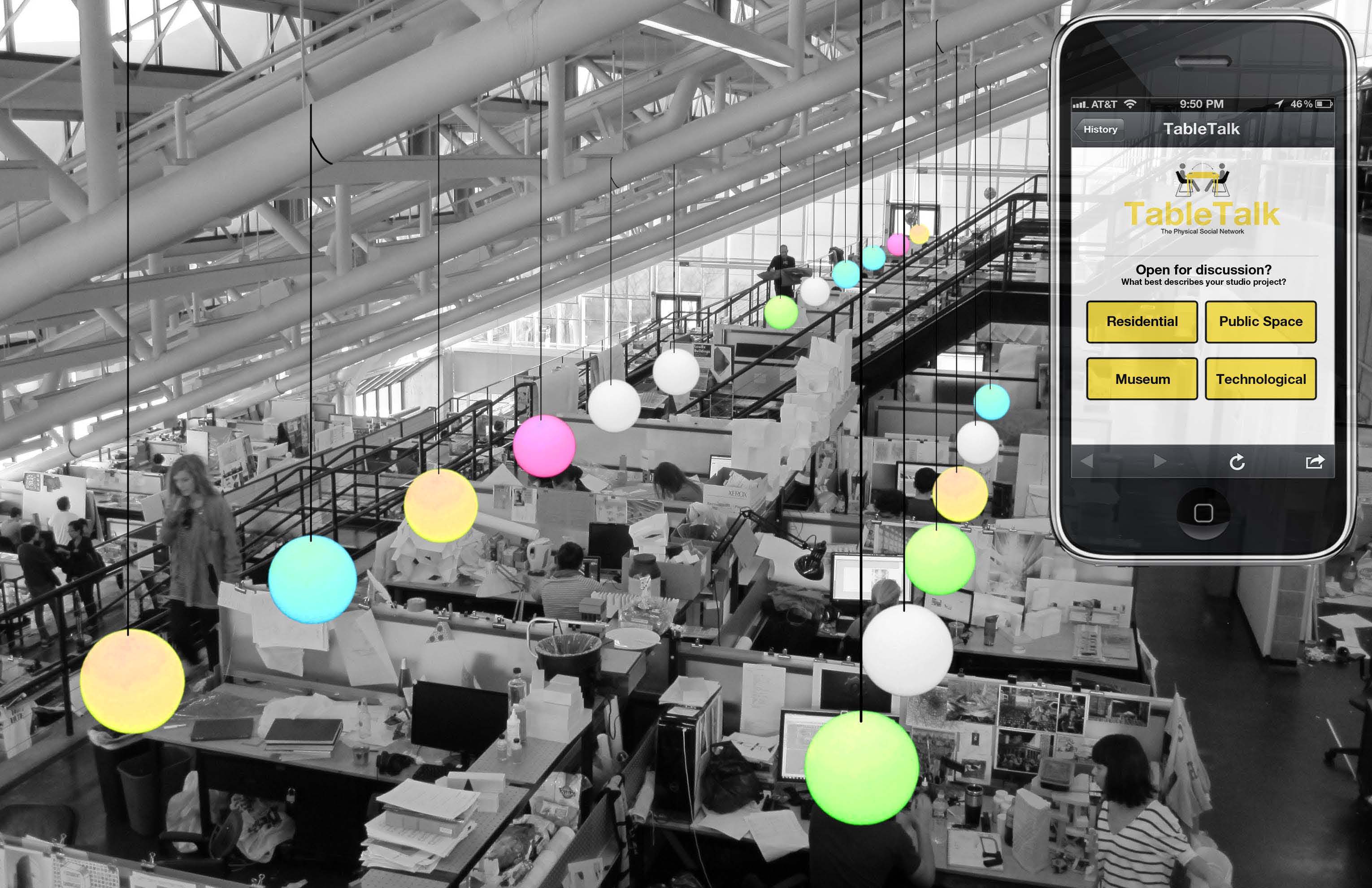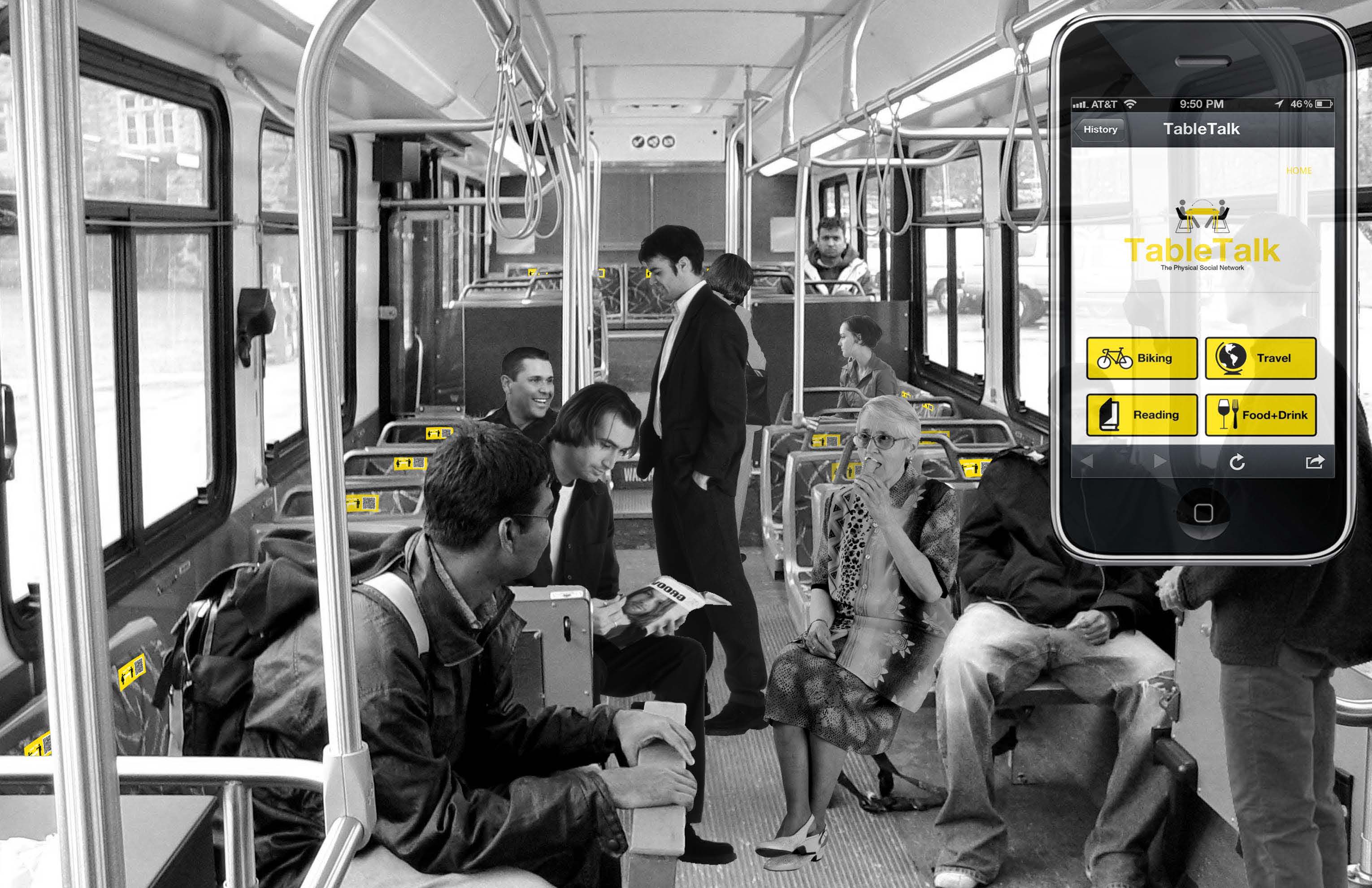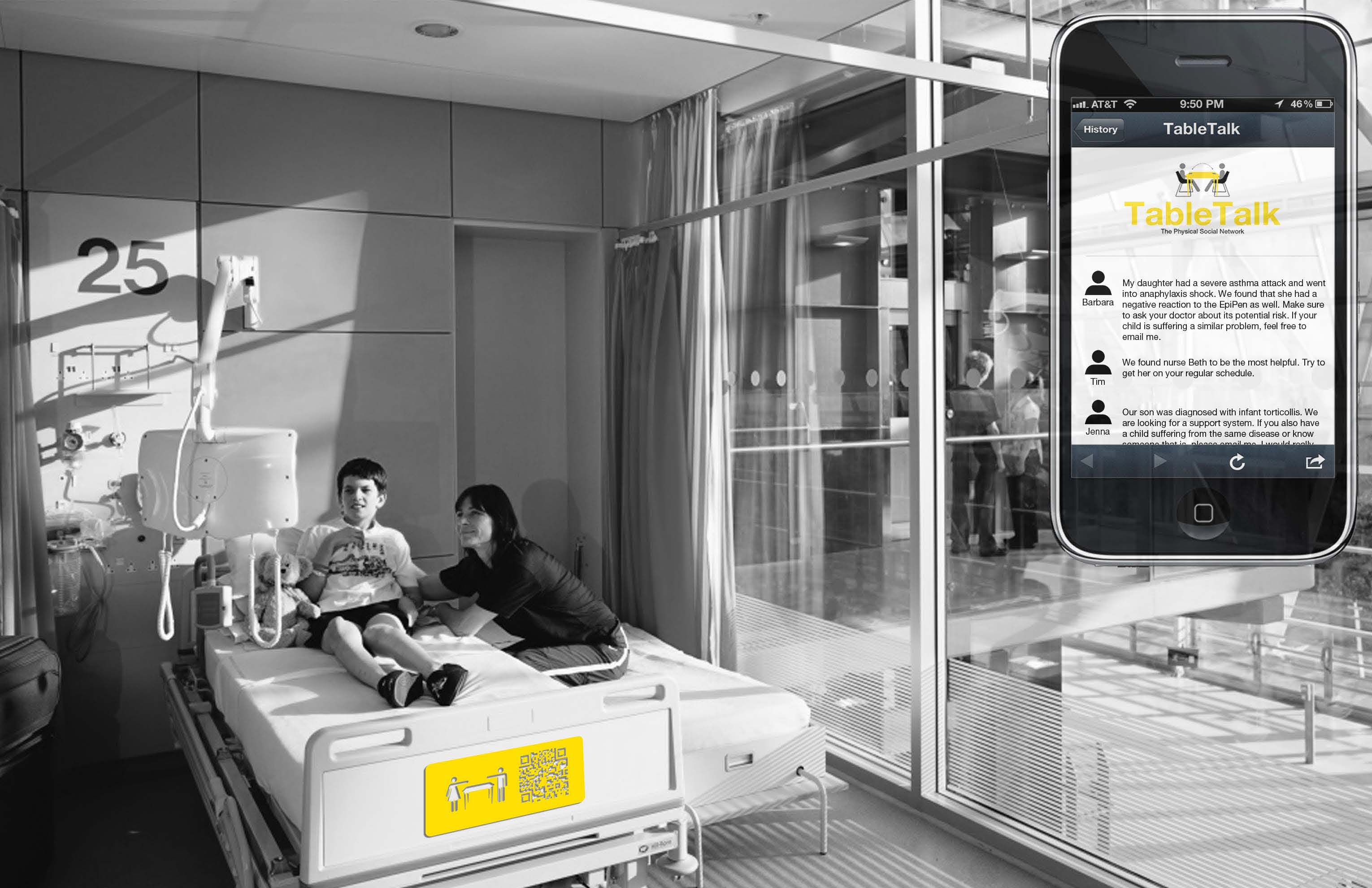Networked Urbanism
design thinking initiatives for a better urban life
apps awareness bahrain bike climate culture Death design digital donations economy education energy extreme Extreme climate funerals georeference GSD Harvard interaction Krystelle mapping market middle east mobility Network networkedurbanism nurra nurraempathy placemaking Public public space resources Responsivedesign social social market Space time time management ucjc visitor void waste water Ziyi
Table Talk is a physical social network connecting individuals of like interests by combining the physical and digital realms of urban space. This new community typology makes formerly invisible layers of shared interest visible in the material space. By embedding personal metadata onto physical objects, a new community work space is developed connecting individuals in both real time and to past occupants; highlighting the importance of the city as place.
Looking at the history of social networking, social connections first and foremost were always spatial. With the invention of the internet, social interaction went from physical to digital and new geo-location technology begins to bring the physical back into social networking, yet only as a dot on a map. What if instead of separating our physical and virtual layers, there was a way our physical environment could become a social network?
TableTalk is the exploration of the static object with an overlaid layer of digital technology which allows the user to embed personal metadata. Each table is networked into a larger system within the room. As an individual ‘engraves’ their interests onto the table; the system is able to delineate shared layers between occupants, connecting people in real time. Once the table receives an individual’s interests, it retains a trace of that person so that connections can occur across temporalities. Based on chance occurrence of choosing the same table, individuals of shared interests can connect through the physical environment. People can leave traces of themselves on the table for the past and the future; adding a heightened importance to place.
With the increased use of the ‘in between’ place between work and home where individuals come to work independently in public, TableTalk further enhances the social quality of this space. This new typology is a place to work alongside other intellectuals, some of which may share an inherent knowledge base, and connect on mutually beneficial terms. This type of environment not only provides a work space, but starts to break social barriers through place, creating a richer way for people to connect, develop community, provide place for organizing and therefore become a tool for place making.
There are several approaches to implementing this physical social network; each incorporating a different level of technology; the first being the simplest means as an overlay onto an existing space. Using QR code stickers, a physical space can be advanced by simply overlaying a digital layer onto its existing surface. The individual can then scan the QR code using their phone and input their layers of interest to begin to connect with others in that space. The first implementation of TableTalk was an overlay in the cafeteria of Harvard’s Graduate School of Design. When a user scanned one of two QR codes on the table, they were prompted to choose one of four topics which brought them to an online message board to reply to past users or leave notes for future. The second QR code let the user leave a visible trace of themselves in the room. When this code was scanned, the user was prompted to enter his or her name which was then immediately displayed on a large plasma screen in the cafeteria. My initial hypothesis was that users would be more willing to use the less visible online message board rather than display their names in public; however I was surprised by the inverse results. More users publicly displayed their name rather than using the online message board. Many went on to further add comments and the screen became a show many would stop to watch. After a few days use, I discovered more messages were added to the online board; most of those in the topic ‘food & drink’; not so surprisingly being in a cafeteria. However, it makes me wonder that if this technology were located in a place without a specific program as this cafeteria had, would TableTalk be able to influence the program of a non-programmed space?
In a fully immersed environment, the technology would be integrated into the table itself; fully combining the digital and physical layers. For this, I designed a responsive table which is capable of absorbing user interest. Depending on the chosen topic, the table adjusts color so that the user is able to quickly look around the room and see others currently in the room with similar interests; breaking that barrier of first conversation starter. The table is also embedded with a QR code which when scanned, connects to all the others who had previously chosen that same seat with the same interest.
By infiltrating unused spaces of our communities with these responsive tables in a layout that promotes social interaction, that ‘in between’ space can begin to act as a place making tool and means for community engagement. This physical social network can begin to connect individuals within the community on deeper and more meaningful levels depending on hobbies, background, research, or need and therefore highlighting the importance of city as place.
